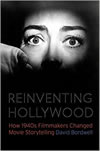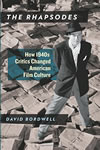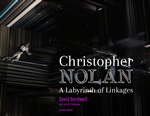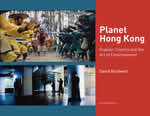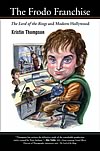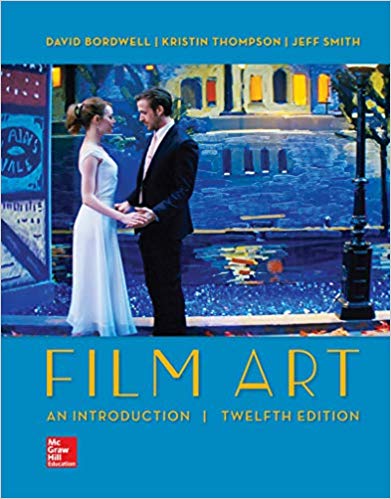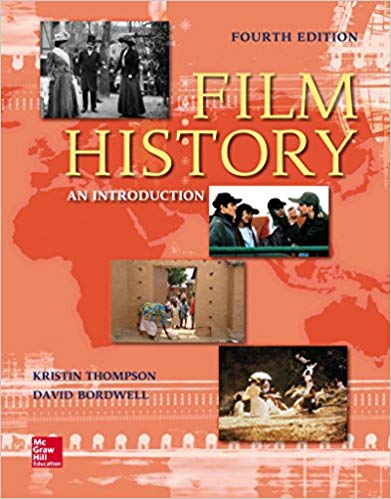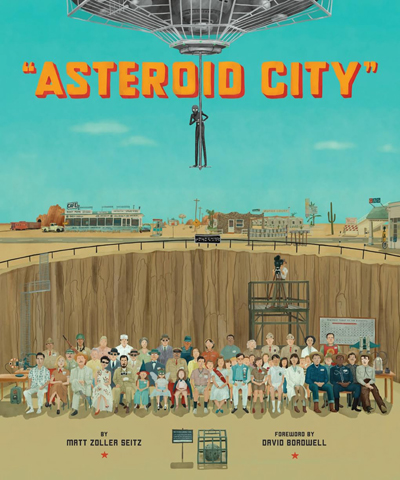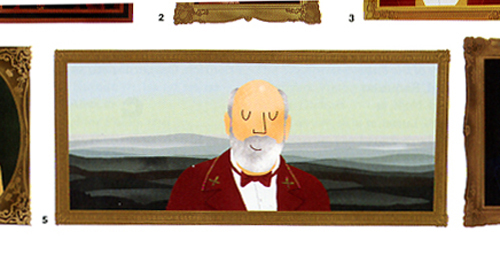Archive for the 'David Bordwell' Category
David and Wes
Kristin here–
Loyal readers of this blog checking back at intervals in the hope of finding a new entry will not have found one for quite some time now. Indeed, the last entry was posted in March, and just over half a of silence.
This lack of new entries does not reflect a decision to bring the blog to an end following David’s death. One might say it has fulfilled its purpose, having started in September of 2006 and reached 1,113 entries. It contains an enormous amount of information about the industry and close analysis of a huge number of films.
Coming up with new ideas for entries will be more difficult now. Part of the fun and inspiration of working on the blog was reading and commenting on each other’s drafts. Many topics came from our visits to film festivals. I have to admit that I’m not keen on attending those alone, though I may eventually do so.
Part of the silence has been due to a busy year focusing on my other obsessions. I’ve been to Egypt twice already and will be going twice later this year. The director of the expedition at Tell el-Amarna, where I work on royal statuary and other hard-stone decorative objects, died last year. After some uncertainty, the new director has been able to organize two seasons this year. I was on the site for three weeks in April-May and will be there for two weeks in December.
Beyond that, I am a big fan of British artist J. M. W. Turner, and this is the 250th Anniversary of his birth. I’ve been to seven exhibitions in England and the USA and have three more planned.
On top of all that, I had a knee replacement in mid-August. Now, six weeks later I am able to drive a car and walk down stairs. Almost recovered!
Next year should be calmer, though maybe not much calmer.
Occasionally I will no doubt get ideas worth writing up. Plus David might be gone, but news concerning him will not end. Publications dedicated to him and honors of various sorts are already in the works, and I will be happy to announce them here. As always, I will link to new entries on my Facebook page.
This entry is one example of such announcements. It deals with two posthumous pieces that reflect David’s love for Wes Anderson’s films.
David joins The Society of the Crossed Pens
In 2013, Abrams brought out a hefty coffee-table book, The Wes Anderson Collection. It dealt with all of the director’s features to that point, from Bottle Rocket to Moonrise Kingdom. Each film was accorded a brief essay by editor Matt Zoller Seitz and an interview with Anderson, with the number of words per each given at its beginning. The collection hit a balance between informing and entertaining the reader. At $50 (or at least that’s what Abrams’ website charges now) it’s a bit steep for all but devoted fans. I don’t know what reaction Abrams executives expected, but it must have sold very well. The publisher decided to issue a similar, though slimmer, book on each film that followed Moonrise Kingdom, that being The Grand Budapest Hotel.
David discussed The Wes Anderson Collection briefly in a blog on the rise of “The Massive Auteur Monograph” in 2020.
We had known Matt for some time at that point. In 2007 David complimented a review of Johnnie To’s Exiled that Matt had written for the New York Times. Matt responded, and a friendship began. David met him at Ebertfest in 2010, where David was presenting Apocalypse Now Redux. I met him the next year at the same place, where I introduced and ran a panel on the restored Metropolis. Thereafter we have crossed paths with Matt, though all too seldom.
There had been no separate book on Moonrise Kingdom, which was a pity. It is David’s and my favorite Anderson film, though Asteroid City runs it a close second. It featured prominently in David’s entry on secondary worlds (“Wesworld”) on November 5, 2015. Before that, on July 20, 2014, he had posted a long, brilliant analysis of it, “MOONRISE KINGDOM: Wes in Wonderland.” That stands in for the one for which there was no book.
Matt no doubt noticed that David was blogging enthusiastically about Anderson’s films and invited him to write an essay for the first single-film book, on The Great Budapest Hotel.
As David pointed out in a brief post when the book came out, “The Grand Budapest Hotel volume assigns contributors the role of concierges (“The Society of the Crossed Pens”). A page with that heading is included in the back, with all the contributors shown as illustrations by Max Dalton. David’s extra wide image reflects his analysis of the shifting aspect ratios used in the film (above); the five other author cartoons are vertical. Shown the caricature ahead of the book’s release, he of course blogged about it:
All the authors of pieces in Matt Zoller Seitz’s forthcoming Grand Budapest Hotel book are given the Max Dalton treatment, in the vein of The Wes Anderson Collection. Herewith, the contributor portrait of your obedient servant. And in Cinemascope!
Yes, I am happy. Yes, it’s a credible likeness. Yes, said book is due out on 10 February from Abrams. No, I will not be getting a tattoo of it.
After the Grand Budapest book came out, complete with his insightful essay, David discussed it in a blog entry on March 29, 2015.
The next book, on The Isle of Dogs, had a different format, with mostly long interviews and images from the production. David was not involved in it.
The format returned to normal for the Abrams book on The French Dispatch of the Liberty, Kansas Evening Sun. David managed to untangle the difficulties of this challenging film in his usual masterful way. When a copy of the book reached us, we discovered that it had been dedicated to David and me. An honor indeed. (More on David’s essay in the section below.)
Once again Matt invited David to contribute an essay to the Asteroid City book. This would have been late in 2022 or early in 2023, I believe. Although the film itself was platform released on June 16, 2023 and went wide June 23, 2023, clearly David would not be able to go to a theater to see it. (He went into hospice care at home in late August.) Matt arranged with Wes Anderson’s office for David to be given online access to a streamer in March and requested two renewals of the access for repeat viewings. We watched it together, and both of us loved it. David couldn’t wait to say something about it, so he posted a brief blog entry on it in May.
For some reason that I don’t remember or didn’t know, David decided he would rather write a Foreword to the book than the usual essay. I think this was probably because he expected that this would be the last of these essays that he would be able to write. In a Foreword he could write a summary of his view of Anderson’s overall stylistic approach across his career before launching into a discussion of the film itself. The Foreword is called “The Stubborn Stylist’s Space Adventure.”
I don’t know whether David thought of it, but writing a Foreword meant that his name is on the front cover of the book.
The piece begins, “In the history of cinema, it’s rare of find directors who persist in the sort of strongly individual styles that we can spot across, say, the history of painting. The supreme example is probably Yasujirō Ozu, who for thirty years clung to unusual techniques of staging, framing, and cutting. Other examples include Robert Bresson, Jacques Tati, and Béla Tarr.”
I don’t think David is saying that Anderson is as great a filmmaker as those giants, though at some point we may decide that he comes close. But he does go on to say, “Wes Anderson is one of those stubborn stylists.” This isn’t a qualitative judgement but a declaration that here is a director who has a distinctive style and sticks to it and that’s interesting. There aren’t that many who do.
After a little over two pages, David switches to how that distinctive style manifests itself in Asteroid City, and of course he gives as cogent an analysis as he did with The Grand Budapest Hotel and The French Dispatch.
The Blu-ray of the film came out on August 15, 2023, twelve days before he went into hospice care. I don’t know how many times he watched it in the six months he lived thereafter, but it certainly was more than once, beyond the original screener viewings. Being bedridden is boring, and David watched many films and TV series, but I am glad that he had this particular one for entertainment.
The publication date of the Asteroid City book was January 28, 2025. David had died nearly a year earlier, but he knew it was coming. I discovered that the book was out during one of my trips to London in the spring, where I visited Fantastic Planet and saw a stack of them in a bookcase labelled “Cult movies.”
For Abrams’ webpage of all the books in the series, see here.
In the “About the Contributors” page, the brief biography of David ends, “His contribution to this volume is his last published work. As far as I know, that’s true. Still, there will be reprints and translations as David’s impact on film studies continues. I have added “David Bordwell” as a new Category in the right margin.
From essay to video
Recently The Criterion Collection has released a set of ten Anderson films, from Bottle Rocket to The French Dispatch. (Focus has released Asteroid City and The Phoenician Scheme.) Each film has two discs, Blu-ray and 4K UHD, as well as a small pamphlet with credits and a short essay on the film. These come in little what appear to be books in a handsomely designed flip-top box. I have watched all the Blu-rays, and they look great.
While this set was in the making, Criterion contacted me about whether I would approve of their taking David’s essay, “No Crying: How to Overcome Blasé Ennui,” in the Abrams French Dispatch book and turn it into a video essay. The idea was to have an actor read the entirety of the text, and Susan Arosteguy and the Criterion team would add clips and frames to turn it into an essay somewhat like the ones in our “Observations on Film Art” series on the Criterion Channel. I OKed the project, and obviously the film’s rights’ holders did. I think the result is excellent. That essay is quite extraordinary and a big help understanding a very complex film.
So it’s not strictly a new essay, but for those who don’t read the Abrams books, it’s another brilliant analysis by David.
A memorial slide show for David
After David’s memorial service in May (a video recording of which is permanently on Vimeo with no password necessary), some people on my Facebook page asked if a collection of photographs of David could be made available.
There was a slide show created to run on a loop in the lobby of the funeral home on the day of the service. I just posted it on Vimeo, also on the channel that David set up in order to put some lectures online. Again, there’s no password and it will remain online. This link takes you directly to it.
I thought it would be appropriate to begin and end it with frames from the funeral scene in Ozu’s End of Summer (above). In between are photos provided by many of our friends and colleagues, going back as far as a scan of a college yearbook photo of David as part of a group of projectionists he belonged to in his undergraduate days. The photos range from David alongside celebrities, at festivals and conferences, and just relaxing at the badminton parties we used to hold in our back yard.
The slides change automatically about every twelve seconds, but as with any video you can pause them. Many of you will want to do that for group photos; you’ll recognize old friends.
Thanks to our friend Michele Smith, who put together the original slide show. I think the images capture his personality as we all fondly remember him. Thanks also to Erik Gunneson for turning it into a video and for posting it.




